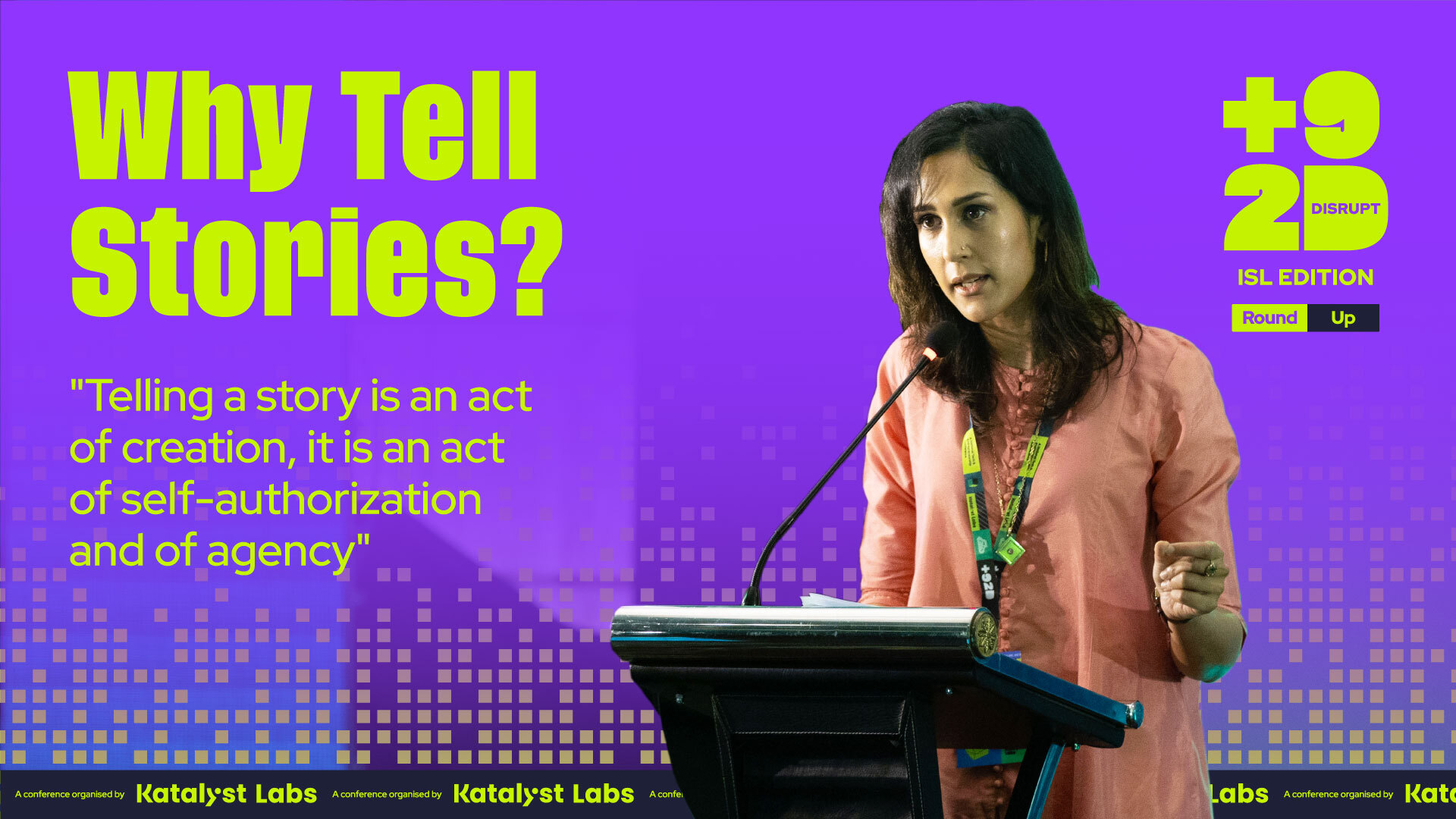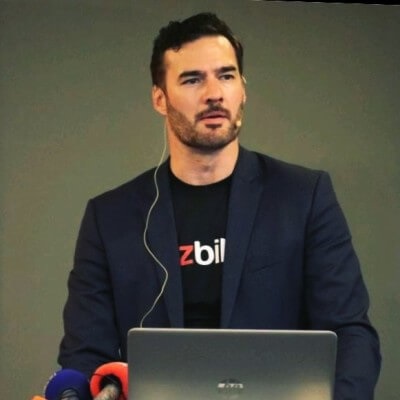
Storytelling has existed in some form or another since the dawn of time.
Before words, cave paintings were used to construct visual narratives. After the advent of language came the oral tradition and shortly thereafter the written word. Our lives are woven by narratives, tied together by the radical force of stories – told to us, told about us, and most importantly, the stories we tell.
At +92Disrupt: ISL Edition, Mira Sethi’s keynote speech revolved around our hunger for narrative, and how it permeates every aspect of our lives.
Why Tell Stories?
Mira Sethi – as a journalist and writer whose debut novel Are You Enjoying? centers around many of the themes spoken about in her speech – understands the need for narratives. The need to tell stories stems from the desire to create our own narratives:
“Our need for narratives goes back 2000 years, at its heart telling a story is an act of creation, it is an act of self-authorization and agency. Telling your own story is a defiance of the conditioned ways in which you’ve been taught to think.”
Mira Sethi on Storytelling and Entrepreneurship
The need for constructing a narrative we believe in extends to all aspects of our lives – whether it be personal or professional.
According to Mira Sethi, the single best trait of an entrepreneur is someone who can tell a compelling story. Investors have a limited attention span, with the most attention given at the beginning of a pitch.
An example Sethi gave of a successful entrepreneur who understood the importance of narrativization and imbibed it within his work was Steve Jobs.
Jobs, with Apple, achieved the sweet spot between form and content because he understood the value of packaging. Design, or how you tell a story, matters as much as the product itself – they go hand in hand.
Jobs married aesthetics and substance. Thus, creating a product that disrupted the assumptions of the tech industry by focusing on both packaging and content. Thereby creating a ritual around unpacking that made the product feel special for users from its onset.
Stories as a Form of Control
The second half of Mira Sethi’s speech centered around the stories told culturally about women in Pakistan. A few questions she posed for the audience to muse over were:
- The extent to which others dictate women’s choices
- The spaces occupied by women and the spaces that exclude them
- Conversations around women’s freedom and autonomy
Storytelling has existed as a way to preserve certain cultural, moral, and social values. However, the role of storytelling in our society is such that more often the stories others tell about women overshadow their own narratives. Hence taking away autonomy and becoming a form of control.
The biggest way in which society restricts women’s freedom is by putting rigid gender roles in place and defining them through societal narratives. These include seeing women purely through association with their male counterparts – as wives, sisters, mothers, and daughters – instead of as individuals in their own right.
As Mira Sethi summed it up:
“In every strand and fiber and locus of power in our culture women, who are silent or passive are thought to be ‘good, dignified and innocent’. This obsession with innocence is designed to trap young women into an interminable girlhood…naïve and perennially cheerful – disengaged from the seriousness of the world.”
Thereby demarcating spaces in which women exist. This is mostly within the domestic sphere, and excluding them from male-dominated public and professional spheres.
Mira Sethi on Disrupting the Societal Narrative
It is no doubt that society curtails women by telling them that they are letting down men when they reject the roles assigned to them.
Quoting the philosopher, Kate Manne, Mira Sethi stated that misogyny is a facet of social power relations. Further, misogyny keeps women trapped in these roles, it is the law enforcement branch of the patriarchy that defines how men and women are ‘supposed’ to behave.
Giving feminine-coded goods and services are what society expects from women, such as but not limited to:
- Attention
- Affection
- Sympathy
- Social, Emotional, and Reproductive labor
Men, on the other hand, take masculine-coded goods and services, such as but not limited to:
- Power
- Prestige
- Reputation
- Money
When a woman takes masculine-coded goods and services, society views her as disrupting her role as a maternal giver. This is because the personhood of a woman is thought to be owed to others. Subsequently, women avoid disrupting social situations in which their behavior is culturally scripted because of the societal backlash they are likely to face.
LIVE NOW: Keynote by Mira Sethi
WATCH NOW 🔽https://t.co/UFvjEgPI3J via @FacebookWatch #Plus92Disrupt #KatalystLabs #HBL #rayn #Zayncapital #HuaweiCloud #syngenta pic.twitter.com/rAu6EPy1SL— katalystlabspk (@LabsKatalyst) August 20, 2022
Making Your Story Count
To sum up, society does not perceive women as agents of their own, created and constructed by their own narratives.
Men and women have long thought of themselves along the lines that society sees them. This is why telling one’s own story becomes an act of radical autonomy. At its essence, Sethi’s speech is a call to action for women to assert themselves, disrupt their gender roles, and define themselves by carving their own narratives.
Jobs’ example illustrates that effective stories can catalyze change. In the end, it is the stories we tell about ourselves that truly matter. It is those narratives that restore agency. It is those stories that count.
Catch up with all the +92Disrupt conversations on our YouTube channel. Read about the latest +92Disrupt: LHR Edition Round Up on the Pakistani Gaming Industry here.



























































































